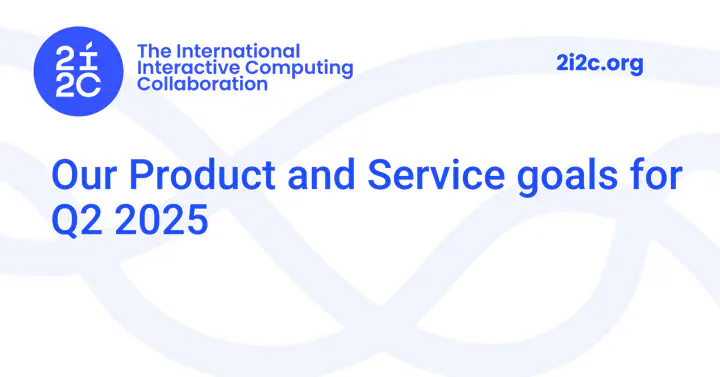Our Product and Service goals for Q2 2025

As we head into Q2 of 2025, we continue to focus our work delivering on a small set of core themes that reflect our communities’ most pressing needs. As a part of this process, we want to continue sharing our platform and service goals in an effort to remain transparent, as well as to provide our communities with an opportunity to give us feedback on our direction, and on what’s important for them. See last quarter’s product goals here.
The following themes are not guarantees, but should provide a high level view on how we plan to improve our product and services offerings in the next quarter. If your organization has funding available to support any of the enhancements below, reach out to us and we can discuss how you can shape our priorities and outcomes.
Give administrators more control #
The implementation of per-user storage quotas in Q1 was the start of a set of product initiatives aimed at giving hub administrators more control and peace of mind over unexpected cost overruns.
We aim to continue giving administrators more control by implementing the ability to associate users with groups for usage monitoring, and as a foundation for future improvements which will deliver group-level management of storage quotas, and later Compute and Dask quotas.
Improve creating and sharing custom environments #
One of the wonderful things about shared open source JupyterHub infrastructure is that it allows community members to share their projects with each other in ways that ensure the work can be fully experienced by the recipient, complete with fully executable content.
In Q2, we aim to improve the ability for hub users to build custom environments in their hubs, and later to easily share those custom environments with others, ensuring their entire toolchain is replicated in full.
Out-of-the-box Jupyter Book support #
We have been working on scoping and building a default JupyterBook implementation using the new MyST document engine, aiming to deliver a default set of tools for authoring and sharing documentation, customizable landing pages and interactive training materials out of the box with new hub deployments.
In Q1 we delivered improvements to the JupyterBook launching interface to allow for automatic hub type detection, as well as landing page components, theming capabilities, galleries and more. We aim to complete this work in Q2.
A better onboarding experience for our communities #
As more communities in the research and education space join the 2i2c community network, it’s important for us to be ready to deliver the best value we can for them at scale. To that end, we’re streamlining the processes we use to onboard our communities, improving the touchpoints through which we engage with them when they join our community network, and ensuring we create opportunities to better understand their needs in order to set them up for success with their hubs right from the start.
Improve and formalize the services we deliver to our communities #
Together with an improved onboarding experience, we aim to improve how we deliver other key services to our communities, including expert consulting, hub management, and technical support, with the aim to offer more scalable, high-value services to address the needs of our communities in a sustainable way.
Some of the goals of this service revamp will include improving triaging of support tickets, shortening our issue response time, and providing our community champions with dedicated expertise on subjects including open source science and tools, community participation in open science, fundraising and grantsmanship co-creation, engineering consultancy and more.
Another update coming in Q3 #
We’ll use this blog post as an informal roadmap of our product goals for the quarter, striving to advance as many of the outlined areas as possible. During our Q3 planning, we’ll reflect on the achievements made in line with this initiative and share a progress update with our community. Keep an eye out for more details!
Acknowledgements #
- Our strategic and organization-level work is supported by a grant from The Navigation Fund and fees from our member organizations.
Thanks for reading! If you'd like to follow our work, join our mailing list or subscribe to our blog. You can read our community hub documentation or learn about membership.